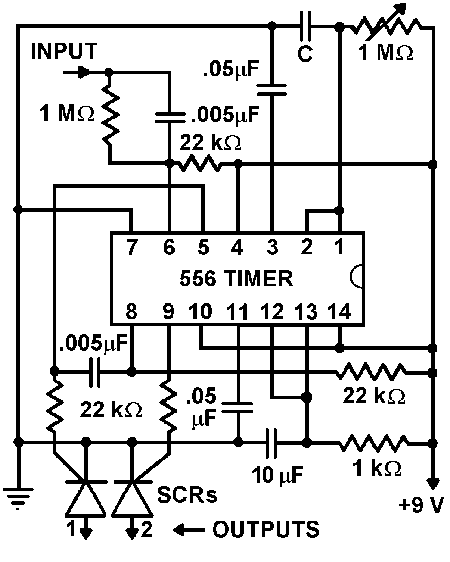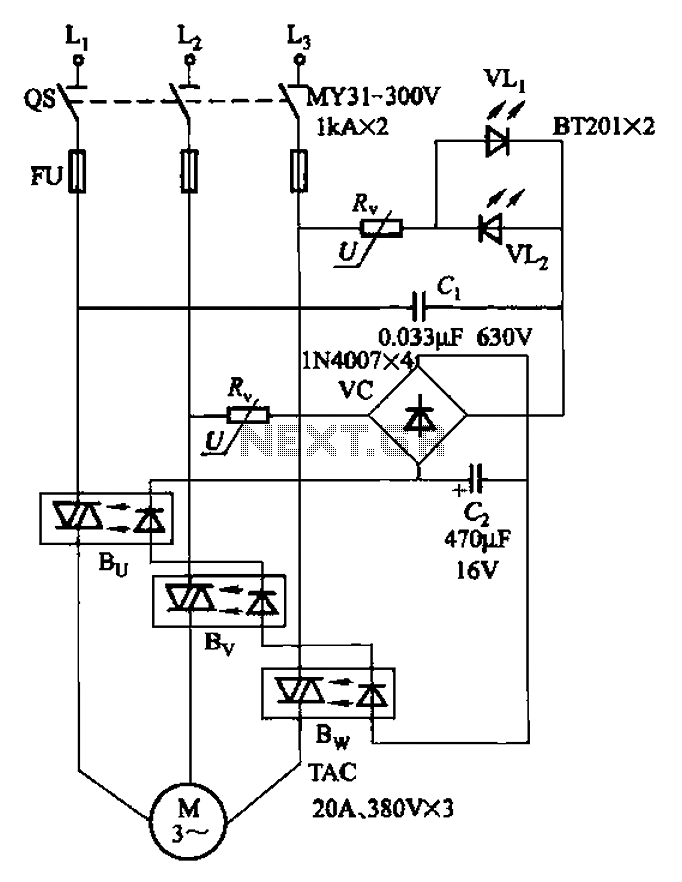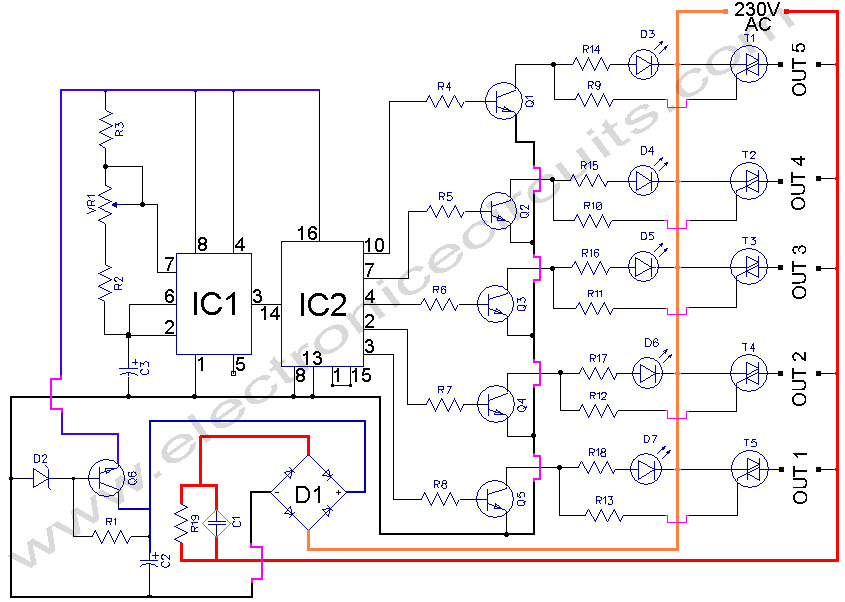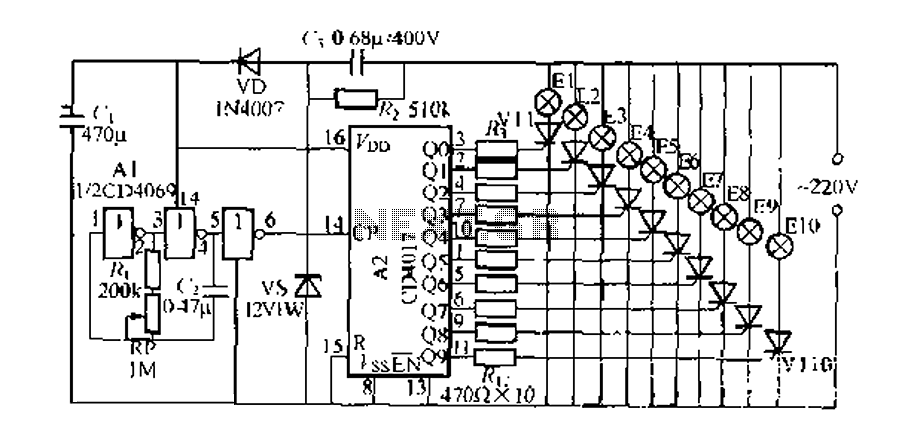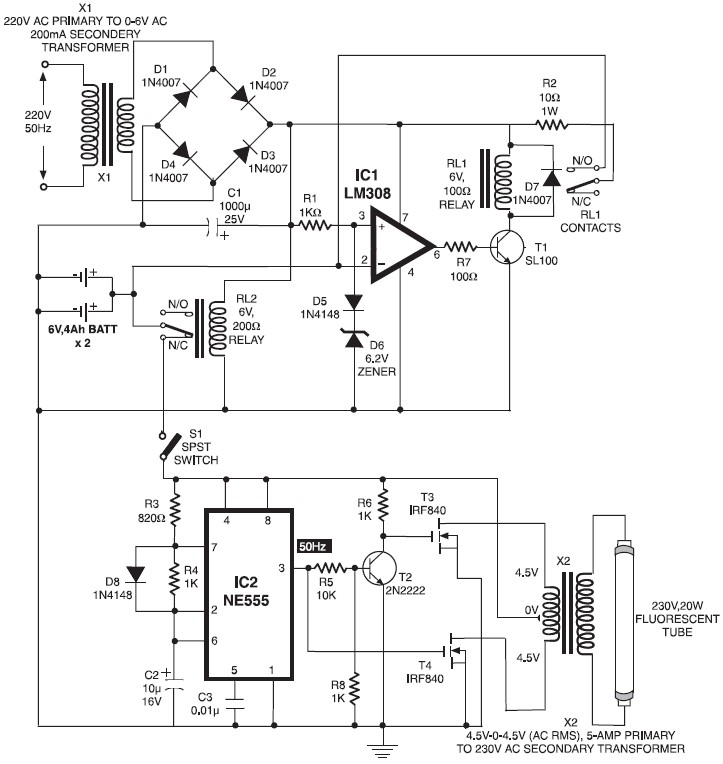
Soft Light Dimmer Circuit

The timer is activated by the zero-crossing voltage pulse. The time constant is defined by the combination of C5 and the resistors R14 and R15, which determines the conduction angle. The transistors T2 and T3 prevent the power switch from operating until the auxiliary supply voltage reaches 8V, ensuring that the gate of the IGBT receives the appropriate voltage level. R5 serves as the current sense resistor, which is utilized for short circuit and over-current protection. When the voltage across R5 reaches the gate trigger voltage of the sensitive gate thyristor, the gate of the IGBT is pulled low, causing it to turn off. Simultaneously, the timer resets. This current limiting feature also protects against excessive inrush current and facilitates an automatic soft-start process.
The circuit operates by utilizing a timer that is triggered on the zero crossing of the input voltage, ensuring synchronous operation with the AC waveform. The time constant, determined by capacitor C5 in conjunction with resistors R14 and R15, plays a critical role in defining the conduction angle of the IGBT (Insulated Gate Bipolar Transistor), which is crucial for controlling the output power delivered to the load.
Transistors T2 and T3 are configured to act as a safety mechanism, inhibiting the power switch until the auxiliary supply voltage stabilizes at 8V. This prevents premature activation of the IGBT, ensuring that it operates under optimal conditions. The gate of the IGBT is sensitive to voltage levels; therefore, maintaining the correct gate voltage is essential for reliable operation.
Resistor R5 is integral to the circuit's protection scheme. It is designed to sense the current flowing through the circuit. In the event of a short circuit or over-current condition, the voltage drop across R5 will rise, eventually reaching the gate trigger voltage of the sensitive gate thyristor. This triggers the thyristor to turn off the IGBT by pulling its gate low, thus interrupting the power flow and protecting the circuit from damage.
Additionally, the circuit's design incorporates a soft-start feature. When power is initially applied, the current limiting action provided by R5 prevents excessive inrush current, allowing the system to gradually ramp up to full operational levels. This not only protects components from damage but also enhances the overall reliability and longevity of the circuit. The timer's ability to reset simultaneously upon triggering the thyristor ensures that the system remains in a safe operating state, ready for subsequent cycles of operation. This comprehensive approach to circuit design emphasizes both functionality and safety in power management applications.The timer is triggered on the zero crossing voltage pulse. The time constant is determined by C5/R14+R15 that is used to determine the conduction angle. The T2 T3 inhibits the power switch until the auxiliary supply voltage reaches 8V to guarantee that the gate of the IGBT receives correct voltage level. R5 is the current sense resistor that i s used for the short circuit and over-current protection. The gate of the IGBT will taken low and turn off, when the voltage across R5 reaches the sensitive gate thyristor gate trigger voltage. At the same time the timer will reset. This current limiting also provides protection against excessive in-rush current and automatic soft-start.
[Source: STMicroelectronics Application Note] 🔗 External reference
The circuit operates by utilizing a timer that is triggered on the zero crossing of the input voltage, ensuring synchronous operation with the AC waveform. The time constant, determined by capacitor C5 in conjunction with resistors R14 and R15, plays a critical role in defining the conduction angle of the IGBT (Insulated Gate Bipolar Transistor), which is crucial for controlling the output power delivered to the load.
Transistors T2 and T3 are configured to act as a safety mechanism, inhibiting the power switch until the auxiliary supply voltage stabilizes at 8V. This prevents premature activation of the IGBT, ensuring that it operates under optimal conditions. The gate of the IGBT is sensitive to voltage levels; therefore, maintaining the correct gate voltage is essential for reliable operation.
Resistor R5 is integral to the circuit's protection scheme. It is designed to sense the current flowing through the circuit. In the event of a short circuit or over-current condition, the voltage drop across R5 will rise, eventually reaching the gate trigger voltage of the sensitive gate thyristor. This triggers the thyristor to turn off the IGBT by pulling its gate low, thus interrupting the power flow and protecting the circuit from damage.
Additionally, the circuit's design incorporates a soft-start feature. When power is initially applied, the current limiting action provided by R5 prevents excessive inrush current, allowing the system to gradually ramp up to full operational levels. This not only protects components from damage but also enhances the overall reliability and longevity of the circuit. The timer's ability to reset simultaneously upon triggering the thyristor ensures that the system remains in a safe operating state, ready for subsequent cycles of operation. This comprehensive approach to circuit design emphasizes both functionality and safety in power management applications.The timer is triggered on the zero crossing voltage pulse. The time constant is determined by C5/R14+R15 that is used to determine the conduction angle. The T2 T3 inhibits the power switch until the auxiliary supply voltage reaches 8V to guarantee that the gate of the IGBT receives correct voltage level. R5 is the current sense resistor that i s used for the short circuit and over-current protection. The gate of the IGBT will taken low and turn off, when the voltage across R5 reaches the sensitive gate thyristor gate trigger voltage. At the same time the timer will reset. This current limiting also provides protection against excessive in-rush current and automatic soft-start.
[Source: STMicroelectronics Application Note] 🔗 External reference
